Yes, you absolutely should. Backcountry skiing is thrilling, but it comes with serious risks - avalanches being the most dangerous. Without ski patrols or safety measures like at resorts, your survival depends on your knowledge and preparation. An avalanche safety course teaches you:
- Snowpack stability: Learn to spot dangerous conditions.
- Terrain hazards: Understand slope angles and terrain traps.
- Rescue skills: Use beacons, probes, and shovels effectively.
- Decision-making: Avoid common human errors that cause 90% of avalanche accidents.
With courses starting around $625, it’s a small price to pay for your safety. Pair this training with proper gear, like compact options such as Snowfeet* WALKSKI, to stay agile and prepared in emergencies. Remember, the backcountry is unforgiving - prioritize your safety before heading out.
Avalanche Education: Which AIARE Course is Right for Me?
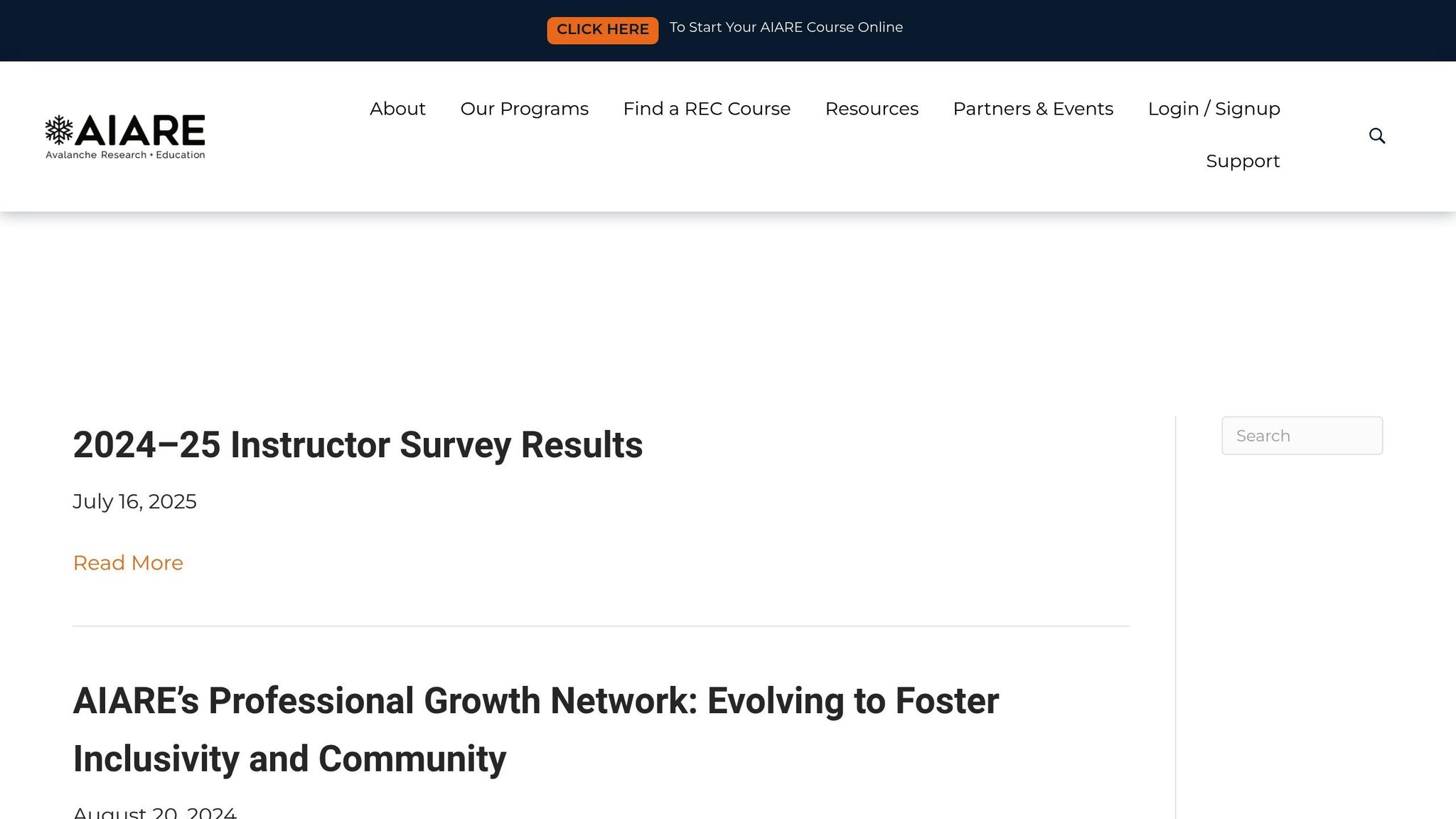
Avalanche Risks in Backcountry Terrain
Backcountry skiing offers breathtaking views and thrilling runs, but it also comes with risks that even seasoned skiers can underestimate. Avalanche terrain includes any area on or near a mountain slope where conditions - like a steep incline - could cause snow to slide. Whether you're using traditional touring skis from brands like Head or Atomic, or compact options like Snowfeet* WALKSKI, understanding what contributes to avalanche dangers is absolutely critical.
What Makes Terrain Prone to Avalanches
The steepness of a slope, or slope angle, is the most important factor in avalanche risk. A staggering 97% of avalanches occur on slopes steeper than 30 degrees. Even gentler slopes aren’t immune if a slide starts higher up.
Certain shapes of terrain also matter. Convex slopes are more hazardous because their snowpack is under higher tension, increasing the likelihood of fractures. In contrast, concave slopes generally have lower tension, making them easier to assess for stability.
Then there are terrain traps - features like gullies, creek beds, cliffs, or flat zones where debris collects. These can turn what might have been a survivable slide into something far more dangerous.
Wind is another major player. Wind-loaded slopes can accumulate snow up to 10 times faster than snowfall alone. Observing wind direction is crucial, as it determines which slopes are piling up with unstable snow.
How Snow and Weather Create Avalanche Conditions
Weather is a powerful force in avalanche formation, and it can change fast. For instance, just 6 inches of snow in 24 hours can significantly increase avalanche risk, while a foot or more often signals a major danger spike.
Temperature swings are another key factor. An "upside-down snowpack" forms when heavier, denser snow lands on top of lighter, fluffier layers. This unstable setup often happens when temperatures rise during a storm, causing the snow to become denser as it falls.
Wind also plays a role. Speeds between 20–60 mph are perfect for moving snow around and forming wind slabs - dense, compact layers of wind-packed snow that can break loose as a single unit. These slabs often form quickly and can be hard to spot.
Rain can destabilize the snowpack by saturating it, increasing the chances of wet avalanches. Meanwhile, long cold spells can weaken snowpack structure over time. Clear nights can cause radiational cooling, which weakens the snowpack, and sunny days can create melt-freeze "sun crusts" that act as sliding surfaces for new snow layers.
Understanding how snow and weather interact is essential, but human behavior often plays an even bigger role in avalanche risks.
Human Factors in Avalanche Accidents
Here’s a sobering fact: 90% of fatal avalanche accidents are caused by poor group decision-making. Often, it’s not just the natural risks but our own choices that lead to tragedy.
Heuristic traps - mental shortcuts like overconfidence or giving in to social pressure - can cloud judgment and lead to dangerous situations. Surprisingly, people with only basic avalanche training sometimes take more risks than those with no training at all. This overconfidence can be deadly. Group size matters too; larger groups (four or more) are more prone to these traps due to social dynamics and the tendency to share responsibility, or worse, avoid it altogether.
A tragic example occurred in February 1992, when avalanche forecaster Mark Yates and five others skied into Utah’s La Sal Mountains. Despite warnings and concerns within the group, Yates pushed to ski the south face of a peak. Ignoring obvious red flags, the group was caught in an avalanche that killed four of the six skiers, including Yates.
"The mountain may not be deliberately trying to fool you, but lurking beneath its beautiful and tantalizing slopes is something that can."
– Ian McCammon
Avalanches often give five clear warning signs before they strike. Professional mountain guide Morgan McGlashon stresses the importance of clear communication when danger arises:
"Emotions are valid, but concrete observations can help us make a real plan. If someone only shares 'I'm scared,' that doesn't help us make a better plan. If you share what you're scared of, we can figure out how to proceed together as a group."
These examples underscore why formal avalanche training is so important. Learning to recognize both natural triggers and human errors can make the difference between a safe outing and a tragic one.
Benefits of Avalanche Safety Courses
Avalanche safety courses provide essential skills that can literally save lives, especially for those exploring backcountry terrain. Whether you're using traditional touring skis or compact gear like the Snowfeet* WALKSKI, proper training is a must for navigating avalanche-prone areas.
Skills You Learn in Avalanche Training
In the U.S., most avalanche courses follow curriculums set by AIARE or AAI. These programs focus on practical, hands-on skills that you’ll rely on every time you venture into the backcountry.
Level 1 courses cover the basics: assessing avalanche hazards, making informed decisions, and performing rescue techniques. You'll learn how to read regional avalanche forecasts, manage group dynamics, and communicate effectively about risks and observations.
One of the most important takeaways is how to identify avalanche terrain and interpret snow, weather, and avalanche warning signs. You'll also develop a structured approach to decision-making, helping you manage risks and follow proven backcountry travel methods. Advanced courses build on these skills, diving deeper into terrain analysis and understanding complex avalanche conditions.
Avalanche Rescue courses focus specifically on emergency preparedness and response. These hands-on programs emphasize companion rescue techniques, giving you the practice needed to act quickly in life-or-death situations.
For many, Recreational Level 1 Avalanche Courses are a starting point. Priced at around $625, these courses teach you how to integrate planning, observations, and risk assessments into your routine. They stress the importance of "Reading the Story of Winter" daily to minimize risks while traveling in the mountains.
These skills not only help protect you but also encourage smarter choices when it matters most.
How Training Improves Decision-Making
A staggering 90% of avalanche accidents are caused by human error. This highlights why avalanche education is so critical - it’s not just about understanding snow science; it’s about improving decision-making under pressure.
Training equips you with the tools to assess and manage avalanche risks effectively. You’ll learn a repeatable decision-making process that avoids risky shortcuts, helping you stay safer in unpredictable conditions.
Jeff Fongemie, Director and Lead Snow Ranger at the Mount Washington Avalanche Center, puts it plainly:
"But most of the time it comes down to human error. It's the humans that are making mistakes."
Research shows that skiers adopt safer behaviors more often after completing avalanche education courses. And with an average of 27 avalanche fatalities annually in the U.S., these behaviors can make a real difference.
Training also emphasizes clear communication within your group, ensuring everyone’s observations are heard. Randy Trover, Former Snow Safety Director at Utah's Snowbird Resort, offers this advice:
"Don't be afraid to go somewhere else [if the snowpack looks weak]. It's so easy to be wrong."
Whether you’re navigating steep slopes with long skis or maneuvering with Snowfeet* WALKSKI Backcountry Touring Skis, understanding terrain, slope angles, and safe route selection are crucial skills that training helps you master. This knowledge forms the backbone of safer backcountry travel.
Building Safety Culture in Backcountry Communities
Avalanche education doesn’t just protect individuals - it helps create a safer community. As Kelly McNeil, a professor at Eastern Oregon University, puts it:
"Avalanche education is public health."
When more people understand avalanche risks and safety practices, it benefits everyone in the backcountry. These courses foster a sense of community, connecting adventurers who share a commitment to safety. This collective awareness spreads good habits, making the backcountry a safer place for everyone.
The numbers underscore the importance of this community approach. Avalanches claim around 40 lives annually in North America, with many more injuries. Trent Meisenheimer, an Avalanche Forecaster at the Utah Avalanche Center, explains the community impact through the "Know Before You Go" (KBYG) program:
"KBYG is about us as a community. What we care about is that you understand that snow-covered mountains are dangerous and there's something you can do about it: learn more about avalanches. You can start with KBYG."
Snowfeet* vs Traditional Skis and Snowboards for Backcountry Safety
When you're heading into the backcountry, your choice of gear can make all the difference - especially in an emergency. Traditional ski brands like Rossignol, Atomic, and Head have been trusted for years, but Snowfeet* WALKSKI Backcountry Touring Skis bring some serious advantages to the table, particularly when safety is a top priority in avalanche-prone areas. Let’s break down how they compare.
Feature Comparison: Snowfeet* WALKSKI vs Traditional Skis
Here’s a quick look at how Snowfeet* stacks up against traditional equipment in key safety scenarios:
| Feature | Snowfeet* WALKSKI | Traditional Equipment |
|---|---|---|
| Portability | Ultra-light and easy to carry | Bulky and require special transport methods |
| Versatility | Handles tight trees, mixed terrain, and tricky approaches | Designed for wide-open slopes; struggles in dense areas |
| Ease of Use | Works with standard winter boots; quick setup | Needs specialized boots and more time to prepare |
| Rescue Readiness | Fast transitions and nimble movements during emergencies | Slower transitions; can be cumbersome in tight spots |
| Safety | Lightweight and agile, helping avoid hazards | Heavier gear can slow you down when it counts |
One major bonus? Snowfeet* is much easier on the wallet. A full ski touring setup from big-name brands can run you about $2,200, but Snowfeet* WALKSKI come in at just $499. That lower price point means more people can afford solid backcountry gear, reducing the temptation to head out with inadequate equipment - a common safety risk.
How Snowfeet* Improves Safety and Movement
At just 100 cm (39 inches) long, Snowfeet* WALKSKI offer some real advantages when it comes to safety in avalanche terrain. As the makers of Snowfeet* put it:
"At just 100 cm, WALKSKI are easy to carry and pack for any adventure. They are light so you won't get tired as quickly on long hikes."
That reduced fatigue isn’t just about comfort - it can also keep your mind sharper in emergencies. And considering that 90% of avalanche accidents are triggered by the victim or someone in their group, staying alert is critical.
Compact gear like Snowfeet* also shines in tight, high-stakes situations. Traditional skis might glide beautifully on open slopes, but they can be a real headache in dense terrain or narrow spaces - places where every second matters. And let’s not forget, dry slab avalanches can hit speeds of 60–80 miles per hour. While no gear can outrun an avalanche, the agility of Snowfeet* gives you a better shot at navigating away from danger zones.
Another big plus? The lightweight design. Whether you’re carrying avalanche safety gear or helping a friend in distress, every pound counts. Snowfeet* let you move quickly and efficiently across all kinds of terrain, making them a smart choice for both safety and practicality in the backcountry.
sbb-itb-17ade95
Avalanche Safety Tools and How Snowfeet* Helps
When venturing into avalanche terrain, having the right safety gear isn't just a suggestion - it's non-negotiable. As avalanche.ca puts it:
"Gear plays a critical role in avalanche safety. It's simple: if you're in avalanche terrain, you must carry the right gear and know how to use it."
But here’s the thing: owning the gear is only half the battle. You also need to access it quickly and use it effectively when every second counts.
Essential Avalanche Safety Tools
Let’s break down the must-have items for anyone heading into the backcountry. The "holy trinity" of avalanche safety gear includes:
- Avalanche Transceiver (Beacon): This device helps locate buried victims by transmitting and receiving radio signals. A popular choice is the BCA Tracker 4, priced at $399.99. While the cost might seem steep, it’s a small price to pay when lives are on the line.
- Probe: Once your beacon leads you to a general area, a probe helps pinpoint the exact location of a buried person. Aluminum probes are a solid, budget-friendly option, while carbon fiber models are lighter but more expensive.
- Shovel: A sturdy shovel with an aluminum blade is essential for digging through avalanche debris. Avoid plastic blades - they just won’t cut it when the snow is packed hard.
Beyond these essentials, additional tools can boost your safety. Two-way radios improve communication with your group. A slope meter (like the BCA model for $26.95) helps you measure potentially dangerous angles. And a snow study kit (around $129.95) lets you analyze snow conditions. Keep in mind, avalanches are most likely to occur on slopes steeper than 30°, with the highest risk between 35° and 50°.
Paired with proper training, having streamlined and accessible gear can significantly improve rescue outcomes.
How Snowfeet* Complements Safety Gear
Choosing the right tools is only part of the equation. How your safety gear works with your ski setup is just as important. That’s where Snowfeet* WALKSKI stands out, offering a unique advantage over traditional setups from brands like Rossignol or Atomic.
When you’re carrying essential items like a beacon, probe, shovel, and first aid kit, every ounce matters. Snowfeet*’s compact design minimizes bulk and weight, making it easier to move efficiently in critical situations. Picture this: your beacon starts beeping, signaling someone may be buried. With Snowfeet*’s shorter, more agile design, you can quickly grab your probe and shovel without the hassle of dealing with long, cumbersome skis.
At just 39 inches, Snowfeet* not only makes accessing your gear faster but also helps reduce fatigue. Staying alert and responsive is crucial during emergencies, and this lightweight setup supports that. As avalanche.ca emphasizes:
"The best way to stay safe is to make good decisions, but if something goes wrong, avalanche safety gear is critically important to a successful rescue."
Snowfeet* also shines when navigating tight or rugged terrain. Traditional long skis can get caught on obstacles or slow you down, especially when you need to move quickly out of a danger zone or assist in a rescue. Snowfeet*’s compact design keeps you nimble, letting you focus on what matters most: safety.
When you’ve already invested over $500 in essential safety gear, having equipment that complements your setup and enhances your mobility can make all the difference in the backcountry. Snowfeet* helps ensure that your gear works with you, not against you, during critical moments.
Practical Tips: Combining Training with Proper Equipment
Preparing for backcountry skiing means getting both the right training and the right gear. The most prepared skiers know these two go hand in hand - education and equipment create a safety net when conditions get tricky. Pairing knowledge with the right tools is your best bet for staying safe out there.
Start with an Avalanche Safety Course
Before you even think about buying gear, sign up for a Level 1 avalanche safety course. This is where you'll build the essential skills every backcountry skier needs. As 57hours.com puts it:
"Knowing backcountry hazards and how to identify them in the field is a crucial skill that all backcountry skiers need to master."
These courses are hands-on. You'll practice rescue techniques, learn how to use tools like beacons and probes, and sharpen your decision-making skills to help avoid accidents. But don’t stop at just taking the class - keep practicing with your gear to build the muscle memory you’ll need in real situations.
Pick Gear That Prioritizes Safety
Once you’ve got some training under your belt, you’ll be better equipped to choose the right gear. For example, Snowfeet* WALKSKI offers a lightweight, safety-focused option at $499, compared to traditional setups from brands like Rossignol or Atomic that can cost over $2,200.
Snowfeet* WALKSKI is compact and easy to use, making it a practical choice for emergencies. According to Snowfeet*:
"Compact, durable and versatile, they are designed for skiers who want to explore without the hassle of heavy gear. Take them anywhere and enjoy the freedom of backcountry skiing like never before!"
These shorter skis are also easier to control than longer ones, which can be a lifesaver when you’re navigating tricky terrain or need to make quick moves to avoid hazards. Plus, they work with various boots - whether winter, ski, or snowboard boots - so you can skip the expense of specialized touring boots.
Stay on Top of Avalanche Conditions
Even with the best training and gear, keeping tabs on avalanche conditions is non-negotiable. Snowpack can change daily due to factors like weather, wind, sun, or fresh snowfall. Before every outing, check the avalanche forecast and discuss the risks with your group.
Planning isn’t just about reading the forecast - it’s about honest communication and making a clear plan together. Your gear plays a role here, too. Snowfeet* WALKSKI’s lightweight design reduces fatigue, helping you stay sharp and focused throughout the day. When you’re not weighed down by heavy equipment, you can pay more attention to the terrain, changing conditions, and your surroundings - all critical for staying safe.
Conclusion: Why Preparation Cannot Be Skipped
Before heading into the backcountry, make sure to take an avalanche safety course - it could literally save your life. With an average of 27 avalanche-related deaths in the U.S. each year and 30 reported fatalities just last winter, the risks are too serious to brush off proper training.
Avalanche education isn’t just about technical know-how - it’s about staying alive. Sure, you’ll learn rescue techniques and how to read snowpack conditions, but the real value lies in sharpening your decision-making skills. Even seasoned skiers can fall victim to human error, which is often the root cause of avalanche accidents.
The backcountry is an unforgiving place where mistakes don’t always come with instant consequences. You might make risky choices and get away with it a few times, only to have those same decisions lead to disaster when conditions take a turn. That’s why formal training is so critical - it prepares you to make the right calls when it matters most.
On top of that, pairing your training with the right gear can make a world of difference. Take Snowfeet* WALKSKI, for instance. At about 39 inches long, these are designed for better control and portability compared to traditional setups from brands like Rossignol or Atomic. Their agility and responsiveness can help you react faster in emergencies. When you combine solid avalanche training with gear that’s built for quick maneuvering, you’re stacking the odds in your favor.
Preparation isn’t optional - it’s life-saving. Invest in the training, sharpen your skills, and choose gear that prioritizes safety. It’s a small price to pay for peace of mind in the backcountry.
FAQs
What will I learn in an avalanche safety course, and why is it important for backcountry skiing?
An avalanche safety course equips you with the know-how to navigate backcountry skiing safely. You'll dive into identifying avalanche-prone terrain, evaluating snowpack stability, and reading weather patterns that could heighten avalanche risks. Plus, you'll get hands-on practice with essential safety gear like beacons, probes, and shovels, and learn life-saving rescue techniques for emergencies.
These skills are key to making smart decisions and minimizing risks when venturing off-piste. Whether you're cruising on traditional skis or exploring with versatile setups like the Snowfeet WALKSKI Backcountry Touring Skis (100 cm), understanding how to handle unpredictable conditions can turn a risky outing into a confident and enjoyable adventure.
Are Snowfeet* WALKSKI Backcountry Touring Skis safer and easier to use than traditional skis in avalanche-prone areas?
Snowfeet* WALKSKI Backcountry Touring Skis: A Game-Changer for Safety and Maneuverability
Snowfeet* WALKSKI Backcountry Touring Skis stand out when it comes to tackling avalanche-prone terrain, offering benefits that traditional skis just can’t match. Thanks to their lightweight and compact design, these skis are not only easier to carry but also a breeze to handle. Less weight means less fatigue, and their nimble build allows for quicker, more precise movements - something that can make all the difference in tricky backcountry situations or emergencies.
Compared to traditional skis from brands like Rossignol or Atomic, which can feel bulky and unwieldy, Snowfeet* WALKSKI offers a streamlined experience. Their smaller size reduces the chance of snagging on rocks or branches and lets you make sharper, faster turns. This added agility, paired with their grab-and-go portability, makes them a top pick for skiers who value safety and efficiency while venturing off the beaten path.
What are the most common mistakes people make in avalanche situations, and how can avalanche safety training help reduce these risks?
Mistakes in avalanche situations often boil down to a few key missteps: overconfidence, poor decision-making, ignoring warning signs, and not properly assessing hazards. These slip-ups are usually tied to a lack of experience or understanding of snowpack stability and terrain risks.
Avalanche safety training can make a world of difference. It teaches you how to assess risks, make smarter decisions, and handle essential safety gear like beacons, probes, and shovels. Knowing how to spot danger zones and act fast in emergencies doesn’t just reduce the chance of accidents - it also gives you the confidence to enjoy backcountry skiing with a clearer head.
Related Blog Posts
- Intro to Light Backcountry: Essential Gear for Exploring Beyond the Groomed Trails (Without the Pro Setup)
- How to Choose Skis for Backcountry Beginners (Safety First!) - 2025
- How to Choose My First Pair of Freeride Skis for Off-Piste Fun (2025)
- How to Choose Skis for Heli-Skiing or Cat-Skiing Adventures (Powder Focus)














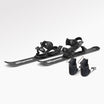






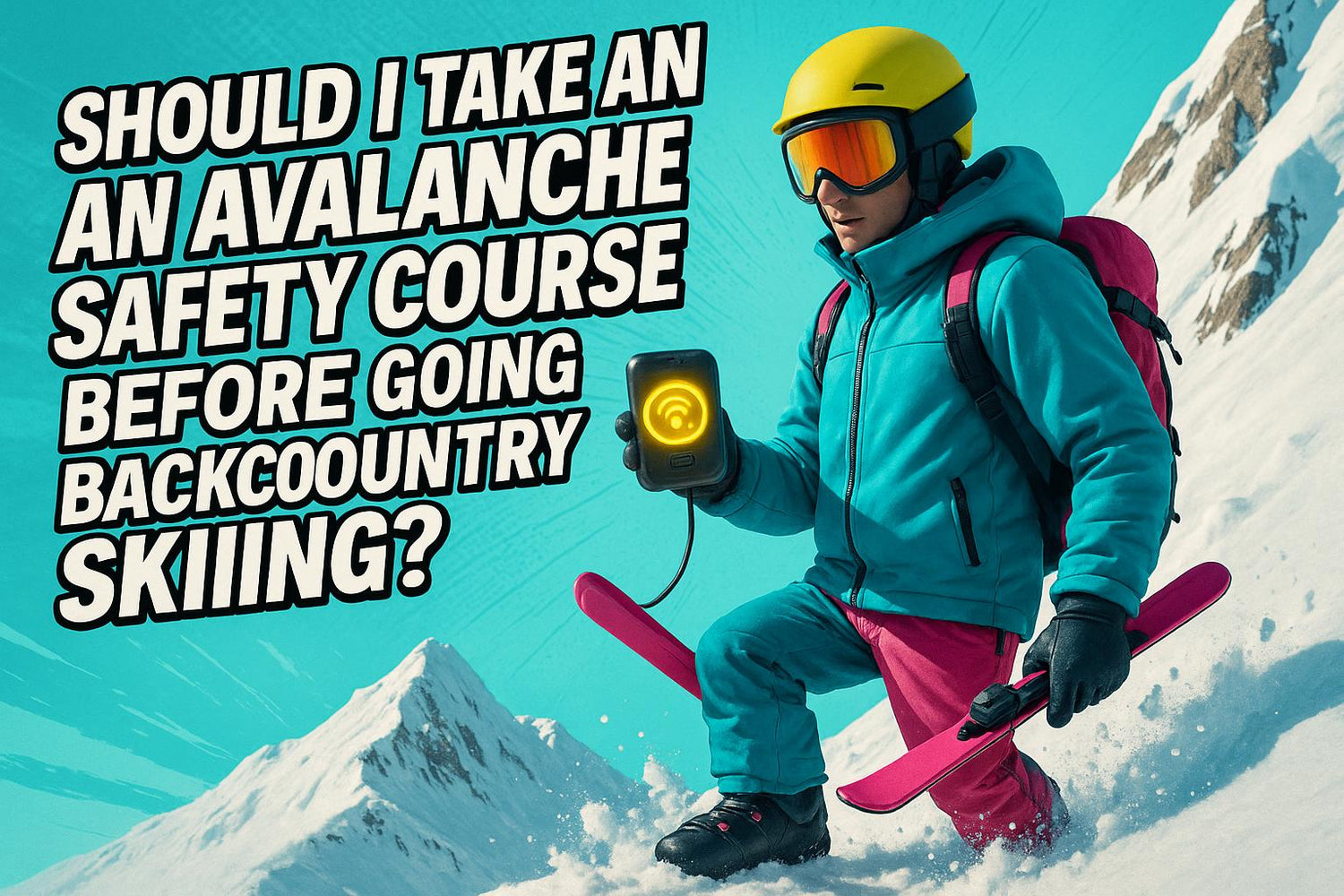
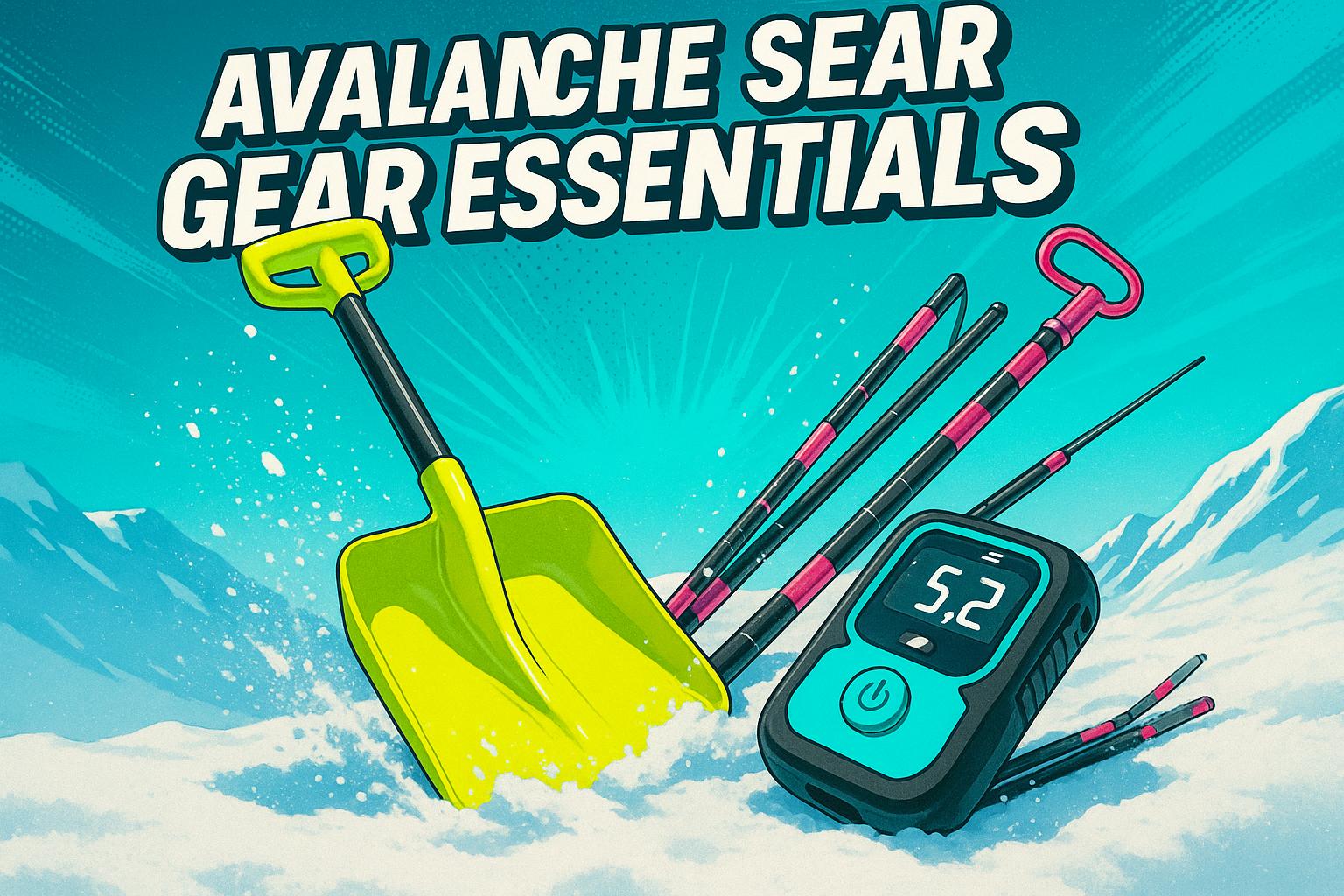
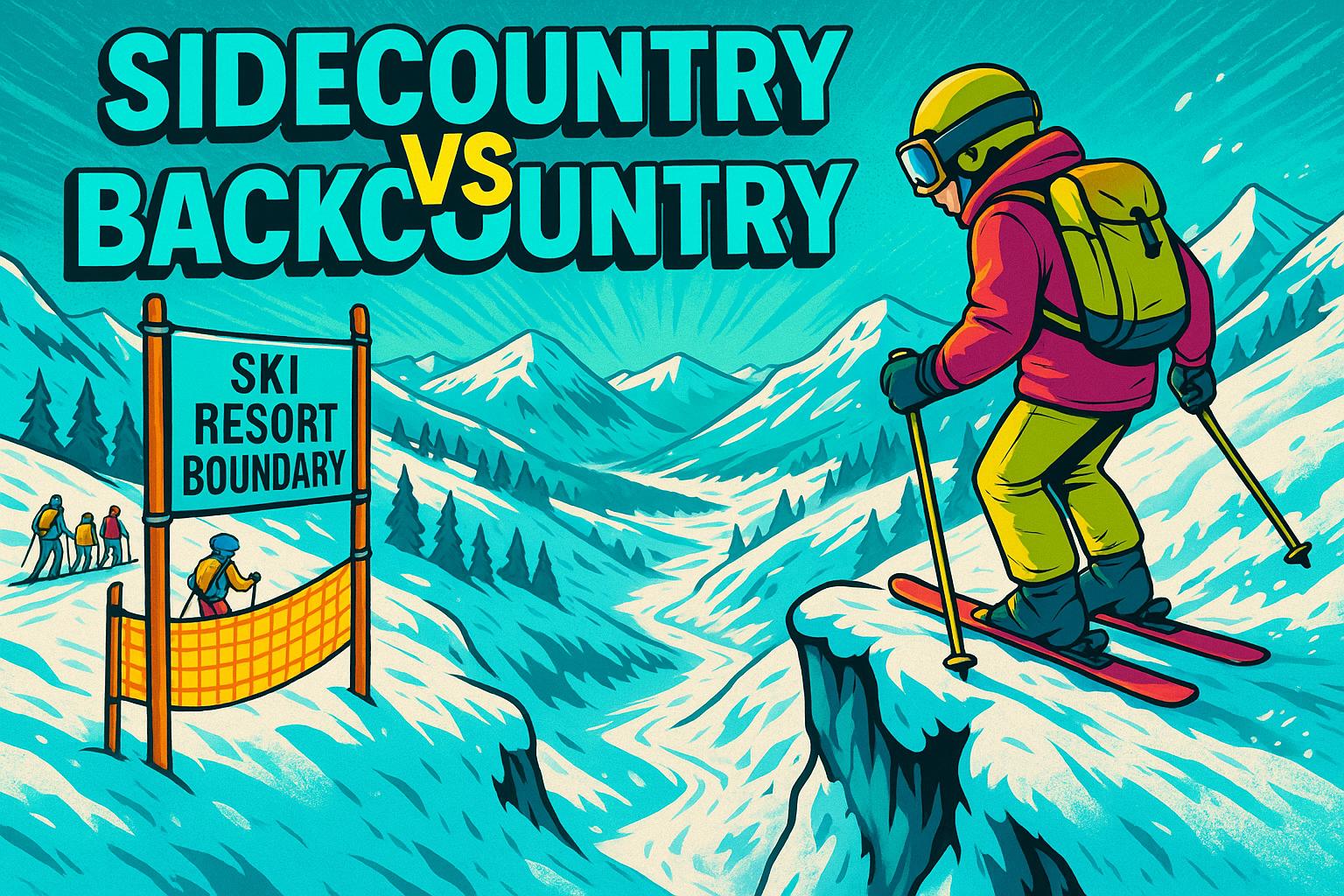










Leave a comment
This site is protected by hCaptcha and the hCaptcha Privacy Policy and Terms of Service apply.